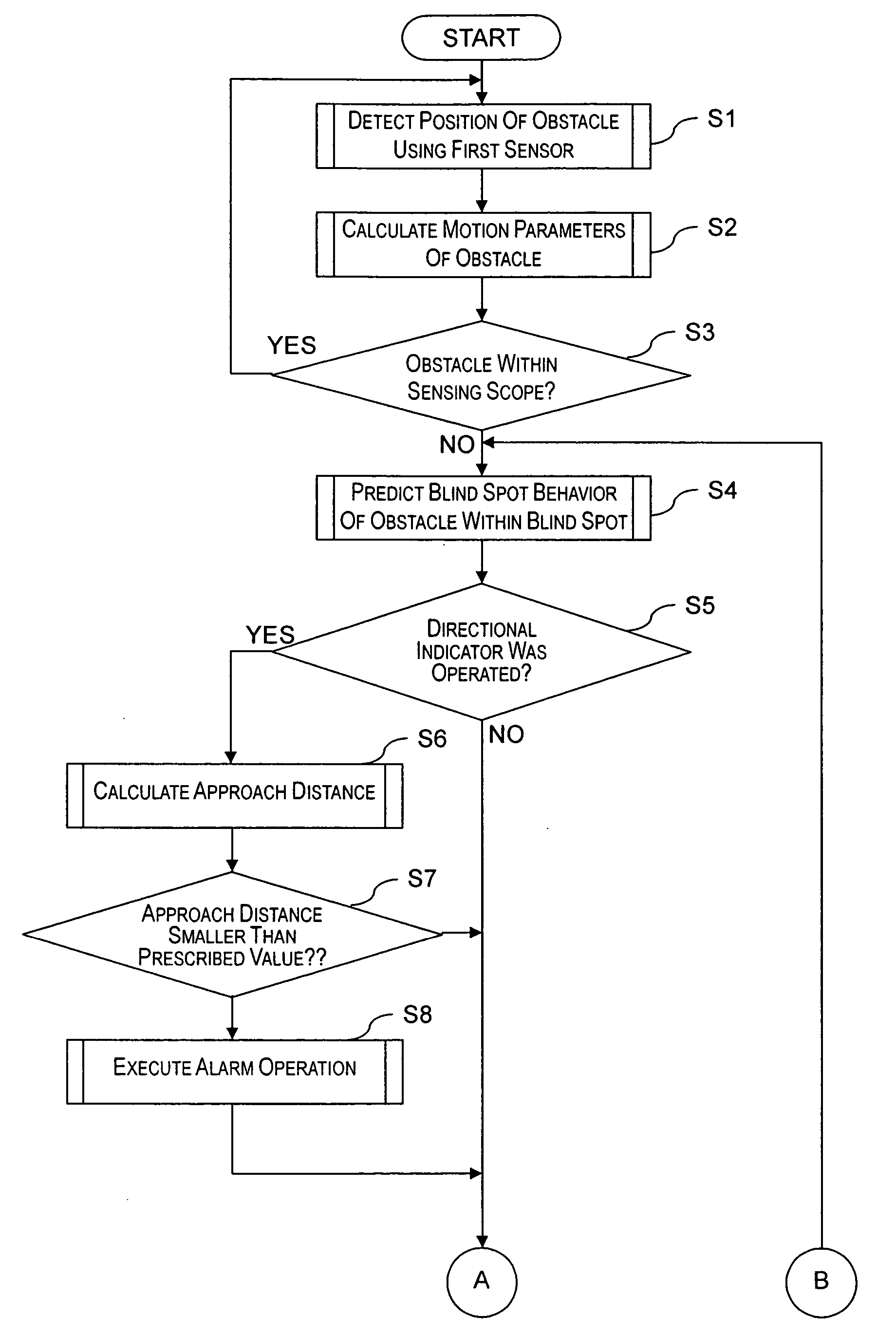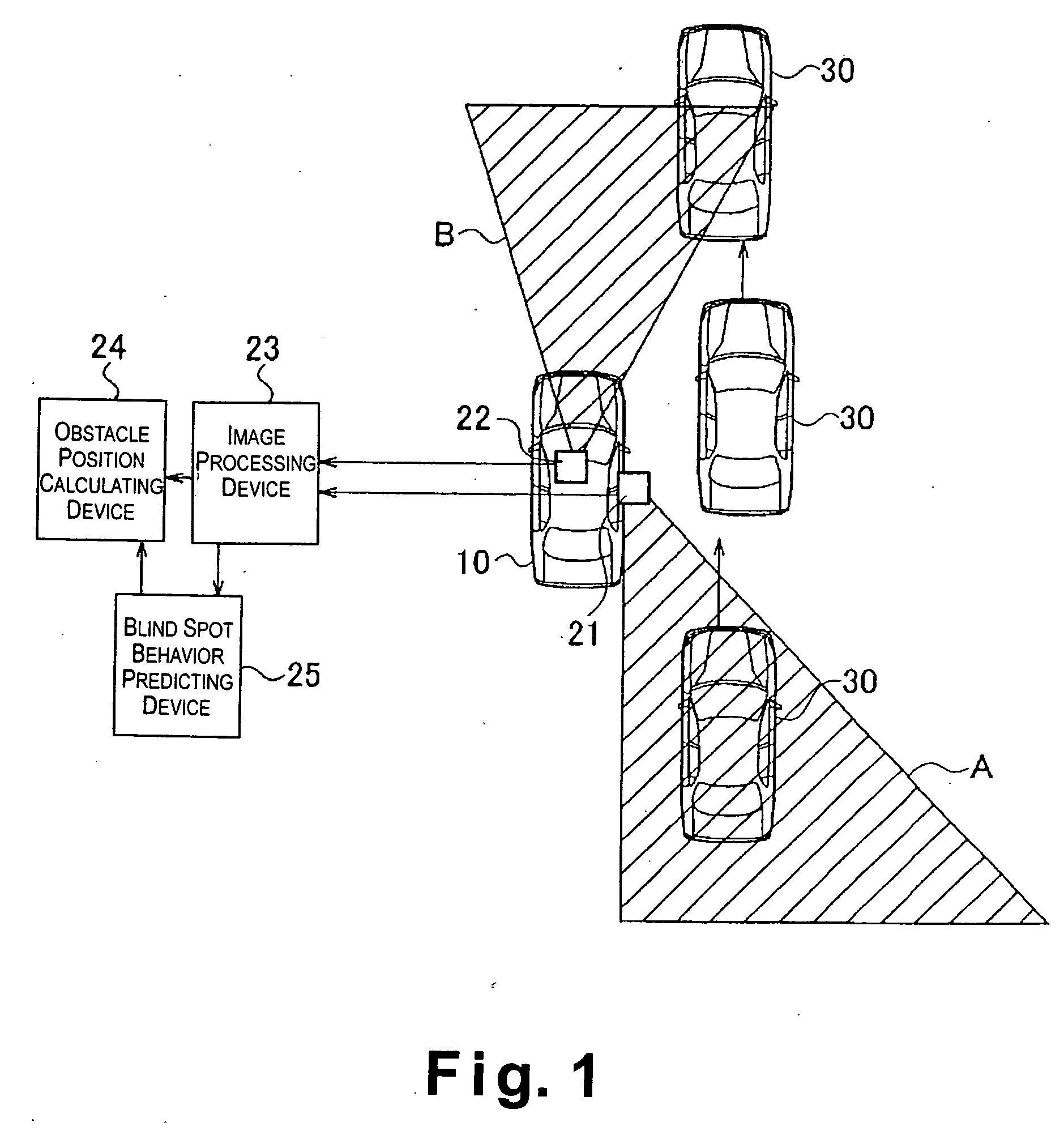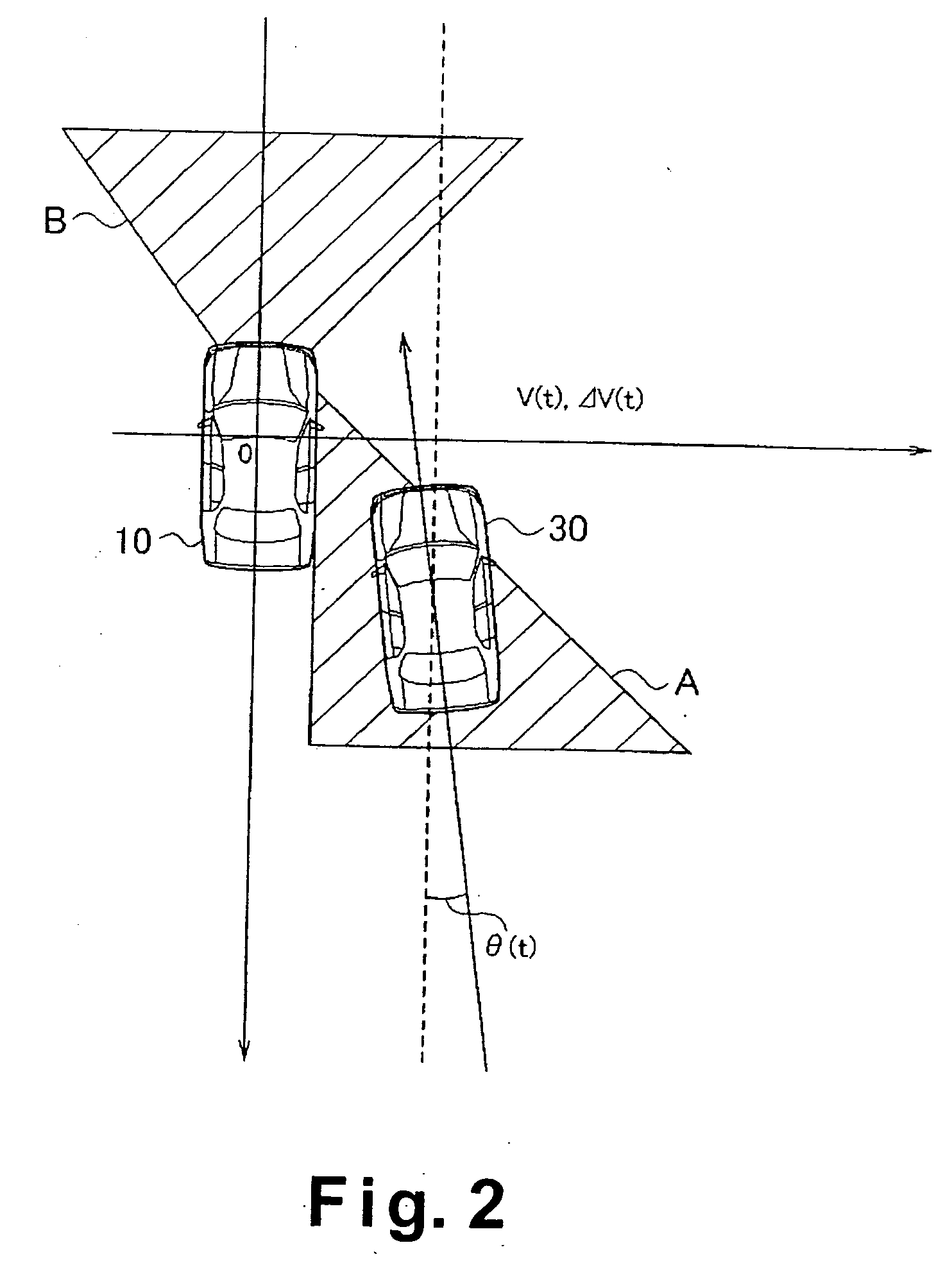Vehicle obstacle detecting device
a detection device and vehicle technology, applied in the direction of pedestrian/occupant safety arrangement, using reradiation, instruments, etc., can solve the problems of limited freedom regarding the mounting position and the mounting direction of sensors (e.g., radars and/or cameras) with respect to the vehicle, and conventional systems are not arranged to positively utilize information regarding the blind, so as to improve detection reliability
- Summary
- Abstract
- Description
- Claims
- Application Information
AI Technical Summary
Benefits of technology
Problems solved by technology
Method used
Image
Examples
second embodiment
[0072] Referring now to FIGS. 6-7, a vehicle obstacle detecting device in accordance with a second embodiment will now be explained. In view of the similarity between the first and second embodiments, the parts of the second embodiment that are identical to the parts of the first embodiment will be given the same reference numerals and step numbers as the parts of the first embodiment. Moreover, the descriptions of the parts of the second embodiment that are identical to the parts of the first embodiment may be omitted for the sake of brevity.
[0073] Basically, the second embodiment of the present invention is identical to the first embodiment, except that the adjustment of the prediction parameter is prohibited when the difference between the predicted blind spot behavior and the actual behavior of the obstacle is extremely large, e.g., larger than a prescribed value. Since the other configurations of the vehicle obstacle detecting device of the second embodiment is identical to th...
third embodiment
[0083] Referring now to FIGS. 8 and 9, a vehicle obstacle detecting device in accordance with a third embodiment will now be explained. In view of the similarity between the first, second and third embodiments, the parts of the third embodiment that are identical to the parts of the first and second embodiments will be given the same reference numerals as the parts of the first and second embodiments. Moreover, the descriptions of the parts of the third embodiment that are identical to the parts of the first and second embodiments may be omitted for the sake of brevity.
[0084] The third embodiment of the present invention is basically identical to the first embodiment of the present invention, except that the vehicle obstacle detecting device of the third embodiment is further configured to determine whether large discrepancies between the predicted blind spot behavior and the actual behavior of the obstacle are occurring on a frequent basis, and diagnose whether a system abnormalit...
PUM
 Login to View More
Login to View More Abstract
Description
Claims
Application Information
 Login to View More
Login to View More - R&D
- Intellectual Property
- Life Sciences
- Materials
- Tech Scout
- Unparalleled Data Quality
- Higher Quality Content
- 60% Fewer Hallucinations
Browse by: Latest US Patents, China's latest patents, Technical Efficacy Thesaurus, Application Domain, Technology Topic, Popular Technical Reports.
© 2025 PatSnap. All rights reserved.Legal|Privacy policy|Modern Slavery Act Transparency Statement|Sitemap|About US| Contact US: help@patsnap.com



